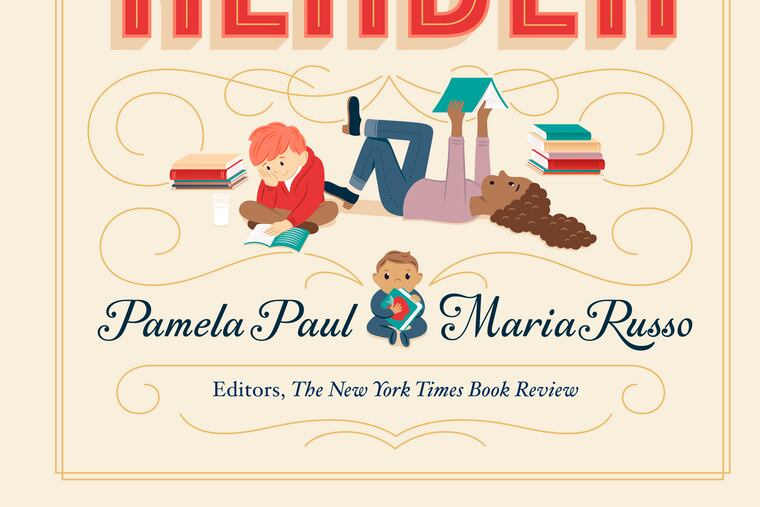‘How to Raise a Reader’ gathers dos, don’ts, and book lists | Book review
Guess what? Bribery's a no-no.

How to Raise a Reader
By Pamela Paul and Maria Russo
Workman Publishing. 217 pp. $19.95
Reviewed by Rasha Madkour
Whether your child is yet-to-be-born, a teenager or somewhere in between, How to Raise a Reader has some tips and a whole lot of book recommendations for you.
Authors Pamela Paul and Maria Russo are parents themselves, as well as editors of the New York Times Book Review, and they draw on their experience in both realms in writing this book, arguing that "school is where children learn that they have to read. Home is where kids learn to read because they want to. It’s where they learn to love to read.”
To do that, however, parents need to follow some guidelines. Don’t fret about when your child learns to read independently. (“There is no ‘correct’ age for independent reading and no special formula for getting every child to read by, say, age 5½.”) Hold your tongue when it comes to your child’s reading choices. (“There may be some specific aspect of that book that is speaking to your child. Or maybe he just feels like reading something less obviously challenging at the moment.”) Above all, practice what you preach. (“If you want to raise a reader, be a reader.”) The authors encourage parents to read themselves, and to foster a culture of reading in the home.
. “Children who read are, yes, likely to excel academically, but there’s much more to the picture,” the authors write. “The latest research shows that children who read at home are also better at self-regulation and executive function — those life skills that make us happier and well adjusted: controlling impulses, paying attention, setting goals, and figuring out how to achieve them.” Paul adds: “Through the novels they’ve read, they will know more about the stories they want to be a part of, what kind of character they might be.”
The book is divided by age range, and each section has advice on what to look for in books for that stage, what to be wary of, and a list of recommendations. There is also an extensive recommended list in the final section of the book, organized by theme (from “Books That Make Us Laugh” to “Tearjerkers,” and “Great Friendship Stories” to “Science and Nature”).
How to Raise a Reader is a surprisingly easy and quick read. The authors don’t delve into the research behind their advice but they do share the summaries. Their take on why bribing kids to read can backfire: “It’s an acknowledged psychological truth that ‘intrinsic motivation’ — having the desire to do something, such as reading, on your own — suffers when the activity is associated with ‘external controls’ such as reward, punishments, and requirements.” Their explanation why you should always reach for the physical book instead of an e-book: “Studies have shown that children, even more than adults, absorb and retain stories better when they read them in print.”
Although the authors discuss the importance of diversity several times throughout the book, some of the illustrations interspersed in How to Raise a Reader have the antiquated, monolithic quality that the authors decry. All the two-parent families depicted consist of a white mother, white father and white child/children. It’s a disappointing oversight.
That aside, the book recommendations alone make How to Raise a Reader a worthy buy, and the age-specific tips and troubleshooting are the icing on top.
From the Associated Press.